-
Improve High-Voltage System Efficiency With Zero-Drift Hall-Effect Current Sense SBOA401A June 2020 – March 2022 TMCS1100 , TMCS1100-Q1 , TMCS1101 , TMCS1101-Q1 , TMCS1107 , TMCS1107-Q1 , TMCS1108 , TMCS1108-Q1
-
Improve High-Voltage System Efficiency With Zero-Drift Hall-Effect Current Sense
Improve High-Voltage System Efficiency With Zero-Drift Hall-Effect Current Sense
The proliferation of high-voltage and AC-connected electronics in systems such as electric vehicles and industrial automation is increasing the need to control, monitor, and protect the equipment we interact with daily. Isolated current sensing fulfills a key need in these areas by providing critical operational measurements. There are multiple implementations and solutions for isolated current sensing, with significant trade-offs between isolation levels, performance, printed circuit board (PCB) space, and cost.
This white paper explains how to meet the growing need for isolated current sensing while overcoming the technical and cost barriers typically associated with it. You will learn how zero-drift Hall-effect current sensors offer many advantages over implementations such as isolated shunt-based, closed-loop magnetic and isolated in-package Hall-effect sensors – including higher energy efficiency and operating voltages, and increased performance.
1 Improving Energy Efficiency For Today’s Systems
As high-voltage systems increase in numbers and power levels, there is a commensurate increase in energy consumption of equipment connected to or charged by the power grid. Regulation, energy costs, and technical limitations such as power density force these systems to become more efficient and use energy more intelligently. Industrial automation equipment, electric battery packs in automobiles and even home appliances waste significant energy during power conversion from the AC grid input to DC loads or energy storage elements.
Even minor improvements in power-delivery systems can have a significant effect considering the scale of modern power systems. For example, server and data centers consume as much as 23% of all U.S. electricity consumption, yet studies show an overall efficiency of approximately 65%. Improving the efficiency of these systems even 0.5% with more efficient power conversion and smarter load monitoring could save up to 850 million kWh, equivalent to the energy usage of almost 80,000 households annually, as Figure 1-1 shows.
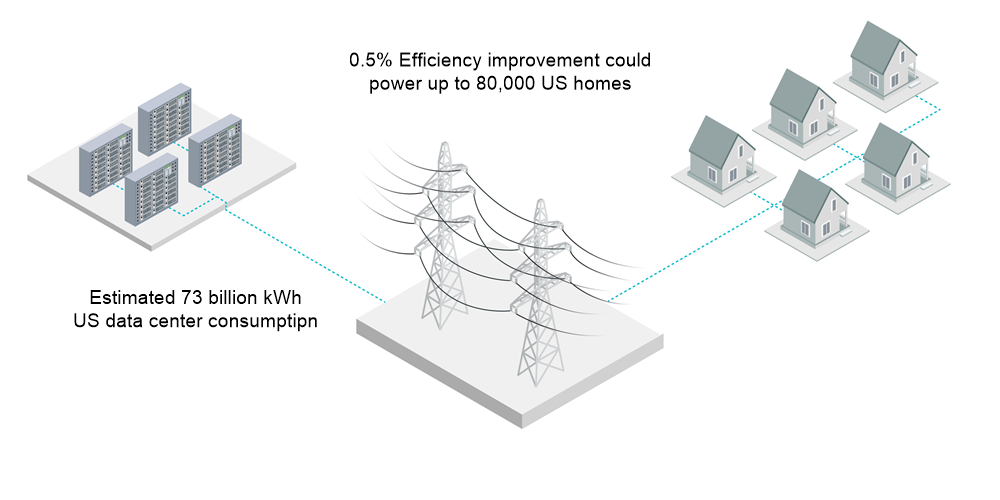 Figure 1-1 Efficiency Improvements Could Save
Significant Energy
Figure 1-1 Efficiency Improvements Could Save
Significant EnergyPower systems such as uninterruptable power supplies (UPS) or industrial AC/DC converters use switching converter topologies to optimize efficiency while converting energy from the AC grid. For these systems, isolated current measurements are required for diagnostic information and converter control loops such as power factor correction (PFC) circuits. Figure 1-2 highlights a PFC topology that requires an isolated current measurement directly on the AC input current. Because the current measurement controls the switching converter, the accuracy and lifetime stability of these current measurements can significantly impact the overall efficiency and power factor of the converter.
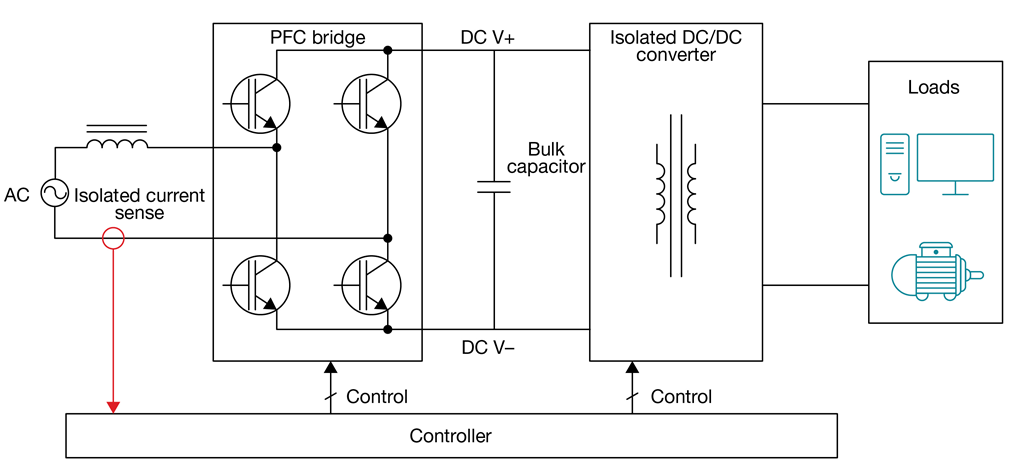 Figure 1-2 PFC Converter Topology With Isolated
Current Sensing
Figure 1-2 PFC Converter Topology With Isolated
Current SensingHistorically, isolated current-sensing measurements have a high cost-performance trade-off, requiring significantly more expense for equipment manufacturers to make high-precision measurements. Hall-effect current sensors provide the simplest implementation with no external components and an improved cost structure, but are typically not capable of providing low drift measurements over temperature.
Isolated shunt-based and closed-loop magnetic devices can provide a higher level of accuracy, but require more PCB space and external components, and are more expensive. The TMCS1100 and TMCS1101 from Texas Instruments (TI) couple the ease of use and low solution cost of a Hall-effect current sensor with a zero-drift precision signal-chain architecture to enable < 1% total error measurements and improved isolation quality. These innovations improve upon the typical negatives of Hall-effect current sensors, while retaining their key positive attributes. Table 1-1 highlights relative strengths and weaknesses of multiple isolated current sensing technologies.
|
Isolated Shunt-based |
Closed-loop Magnetic |
In-package Hall-Effect Sensor |
||
|---|---|---|---|---|
|
Typical Hall-Effect Device |
TMCS1100 Family |
|||
|
Solution size |
– |
– – |
+ + |
+ + |
|
External components needed |
1 to 3 |
2 to 5 |
0 |
0 |
|
Solution cost |
– |
– – |
+ + |
+ + |
|
Accuracy |
+ + |
+ + |
– |
+ |
|
Offset and sensitivity drift |
+ + |
+ + + |
– – |
+ |
|
Insulation Lifetime |
+ + |
+ + |
– |
+ |
The 1-kW, 80 Plus Titanium, GaN CCM totem pole bridgeless PFC and half-bridge LLC reference design highlights the impact of such a high-precision sensor, where the TMCS1100 enables a small form factor design that achieves a power factor of 0.98 with > 99% efficiency. The thermal stability of the TMCS1100 in both sensitivity and offset drift contributes to a reduction in total harmonic distortion of as much as 5%.
The galvanic isolation of the TMCS1100 decouples the system from the AC grid and simplifies measurements on AC lines with no additional components while providing < 0.5% of measurement drift. This provides improved efficiency over a variety of load and environmental conditions in compact, high-power systems such as server or network power supplies. Because the grid infrastructure chain relies on multiple UPSs, conditioners and power-conversion steps, improvements in performance, and cost structure are compounded by each stage in the chain.
2 Enabling Broad Electrification
Electrification enables improvements in performance, reliability, and total lifetime cost, but these systems require isolation from their high-voltage AC or DC domains in increasingly dense form factors. Many existing isolated current-sensing solutions take up significant space on high-voltage PCB designs due to additional external components, housings or elements. Hall-effect current sensors provide a monolithic, single-chip solution incorporating both the isolation and sensing elements in surface-mount form factors, such as 8-pin small-outline integrated circuit (SOIC) packages with 5 mm by 6 mm of PCB space.
However, most sensors in 8-pin SOIC packages only provide around 400 V of a working lifetime isolation voltage, which limits the usability of these devices to systems operating below this level. For example, many high-power battery systems have 400-V nominal DC buses, and they can significantly exceed this level with load and switching transients. Industrial systems that operate from 240 VAC and convert power to a 340-VDC rectified voltage level will often include a boost stage, as Figure 2-1 shows, which can reach voltage levels of 400 VDC–600 VDC. Many solar string inverters operate with photovoltaic cell and maximum power-point tracker (MPPT) buses in the 480-V to 600-V range, which are also outside the capabilities of most available 8-pin SOIC Hall-effect current sensors.
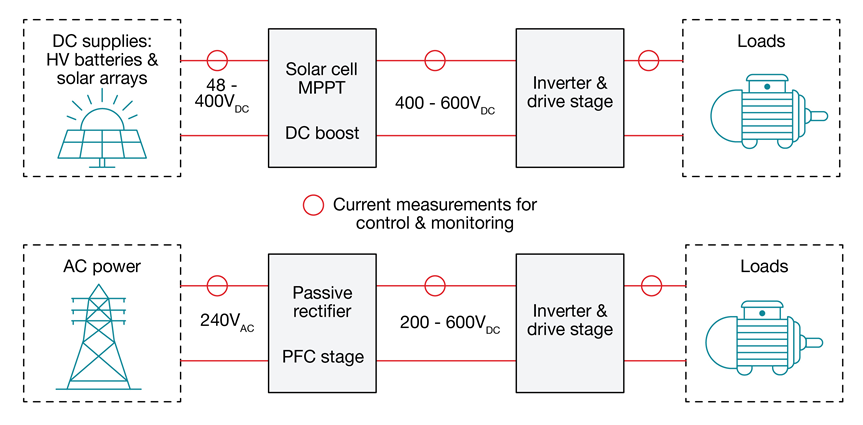 Figure 2-1 AC-Rectified System Including Boost
Circuit and String Inverter Circuit With MPPT Boost.
Figure 2-1 AC-Rectified System Including Boost
Circuit and String Inverter Circuit With MPPT Boost. To provide a sufficient lifetime isolation margin, the TMCS1100 and TMCS1101 devices provide 600 V of working voltage in an 8-pin SOIC form factor, with a higher lifetime margin than what is required by industry standards such as Verband der Elektrotechnik 0884-11 and Underwriters Laboratories 1577. This working voltage provides a sufficient isolation margin for equipment manufacturers without the need to transition to a larger solution size.
It is possible to extrapolate the expected lifetimes of a device from a qualification test known as time-dependent dielectric breakdown (TDDB), which measures the expected lifetime of a device versus the device voltage stress. Figure 2-2 shows the TMCS1100 family TDDB curve. The operating lifetime zone greatly exceeds industry standards for a 26-year lifetime with a 20% voltage safety margin.
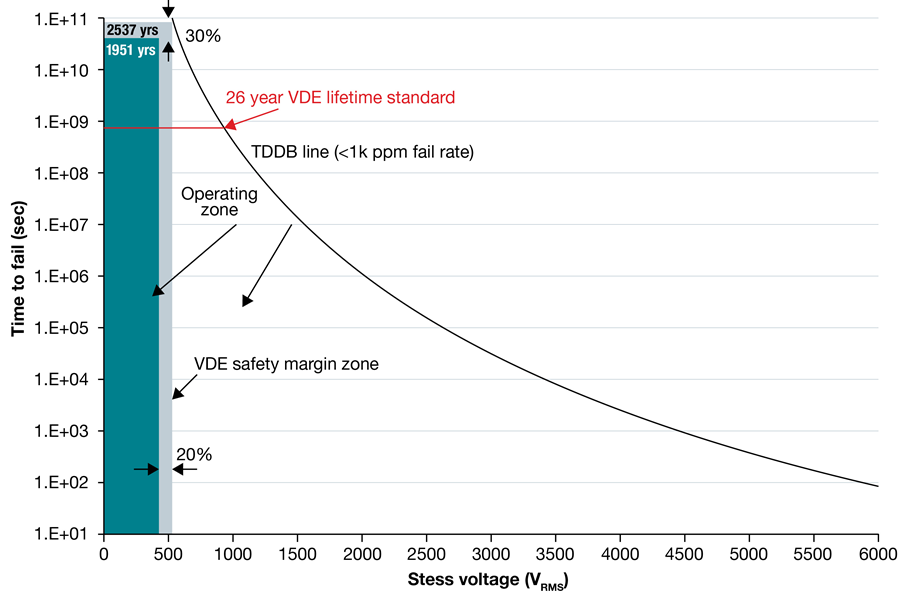 Figure 2-2 TDDB Curve of the TMCS1100
Family.
Figure 2-2 TDDB Curve of the TMCS1100
Family. 3 Increasing Performance of Key Power Systems
Electronic power systems rely on accurate feedback of operating characteristics to create tight control loops to optimize performance. As Figure 3-1 shows, many motor-control algorithms rely on sensing current through each phase of the motor to control torque and speed, and to accurately position the rotor. This current feedback must be isolated from the high-voltage bus, reject the voltage swings to which the current sensor is subjected, and maintain a high degree of matching between each phase. Low temperature drift reduces phase-to-phase errors of a load system, allowing operation with superior dynamic response and optimized torque or speed control, while reducing behavior such as torque ripple.
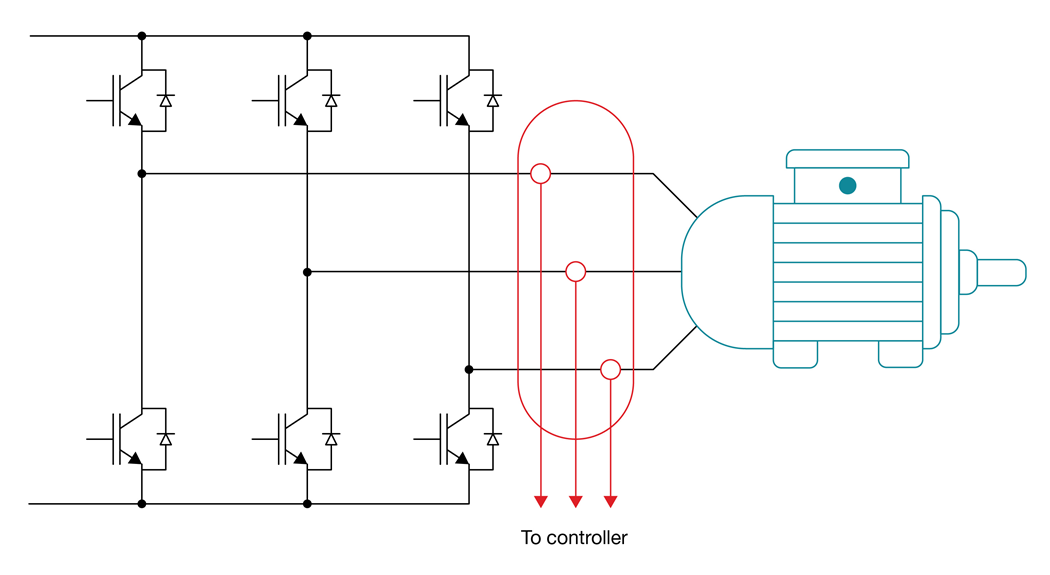 Figure 3-1 Three-Phase In-line Motor
Current Sensing
Figure 3-1 Three-Phase In-line Motor
Current SensingEnsuring stability of the current feedback over a wide range of operating, load, and environmental conditions is a significant design challenge. High temperature drift associated with existing magnetic solutions means that system designers have either limited control-loop performance or need to compensate with more complicated solutions or multipoint system-level calibration. In addition to being a costly solution, multipoint calibration cannot protect against degradation in performance over the lifetime of the system.
By providing a sensitivity temperature drift of < 0.3% and a low offset drift of < 10 mA across a temperature range from –40°C to 125°C, the TMCS1100 family enables performance across many environmental conditions. The combination of low offset and a 0.05% typical linearity enables high-precision current measurements across a wide dynamic load. Figure 3-2 illustrates how these performance specifications result in better than 0.5% full-scale accuracy– a level previously unachievable in a simple, easy-to-use form factor.
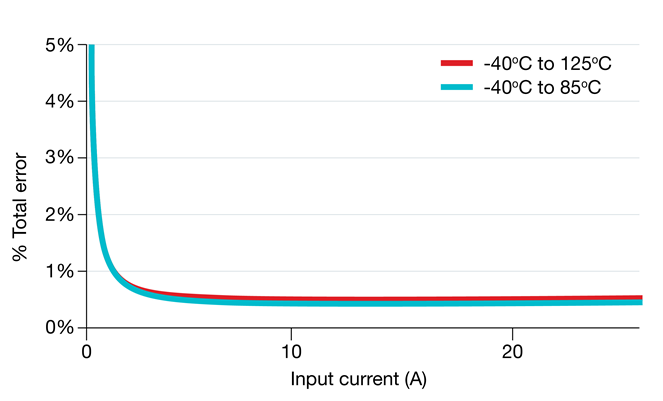 Figure 3-2 Accuracy Specifications and
Resulting Current Error of the TMCS1100
Figure 3-2 Accuracy Specifications and
Resulting Current Error of the TMCS1100The same device compensation techniques used to stabilize performance over temperature provide more than three times lower lifetime drift than most competitive solutions. Lifetime qualifications show a typical sensitivity drift less than 0.5%. This combination of high dynamic range, low thermal drift and lifetime stability enables measurement precision from a Hall-effect current sensor that was previously unattainable – improving system performance regardless of the time of year or environmental conditions, as well as over the lifetime of the system.
4 Facilitating High-Voltage Diagnostics and System Monitoring
Massive growth in computing and smart factories necessitates better monitoring and diagnostics to better understand energy consumption, system performance levels, equipment health, and operational status. Expanding the number and performance of distributed current sensor nodes enables a highly-connected sensor network for automation, as Figure 4-1 illustrates.
 Figure 4-1 Smart Factories Require Highly Distributed Sensor Networks.
Figure 4-1 Smart Factories Require Highly Distributed Sensor Networks. Poor trade-offs among accuracy, cost, and form factor constrain designers in either the number or quality of isolated current sensors they can effectively use. Current sensors with low accuracy reduce the effectiveness of equipment automation, while higher-cost systems limit the possible number of nodes. The TMCS1100 family improves trade-offs, providing a simpler approach that makes isolated current measurement easier while reducing PCB space for space-constrained systems.
Much like how modern computers adaptively change processor operating conditions based on loading and data-throughput requirements, the same type of optimization is applicable to entire production or communication networks. Individual monitoring of equipment in a larger network allows for both load balancing or the throttling or shutting down of specific systems based on energy-consumption measurements.
The main challenge to such an optimization scheme is the ability to accurately measure power consumption or loading across a wide range of conditions. The low offset drift of the TMCS1100 and TMCS1101 enable high-precision energy measurements across a broad dynamic range, as Figure 4-2 shows, where < 0.5% active power metering accuracy was accomplished across load conditions from < 0.1 A to 20 A.
 Figure 4-2 Active Power Metering Capability With TMCS1100 Current Measurements.
Figure 4-2 Active Power Metering Capability With TMCS1100 Current Measurements. At the individual equipment level, current measurement information can optimize tool performance and collect diagnostic information to determine tool health and predict failures. Having a more accurate sensor with a lower lifetime measurement drift and higher temperature stability makes it possible to detect smaller levels of performance variation, as sensor uncertainty places a lower bound on detection capability. The same technique can also be used with redundant current measurements in systems where safety and reliability of high-power electronics are a key concern.